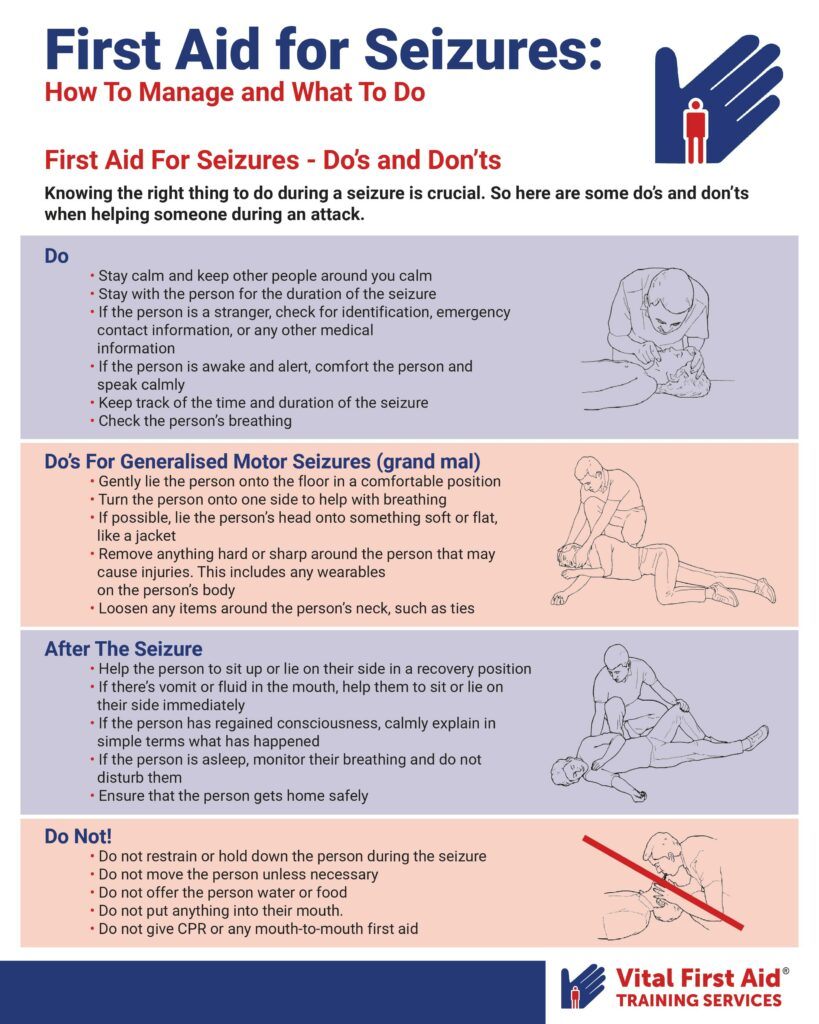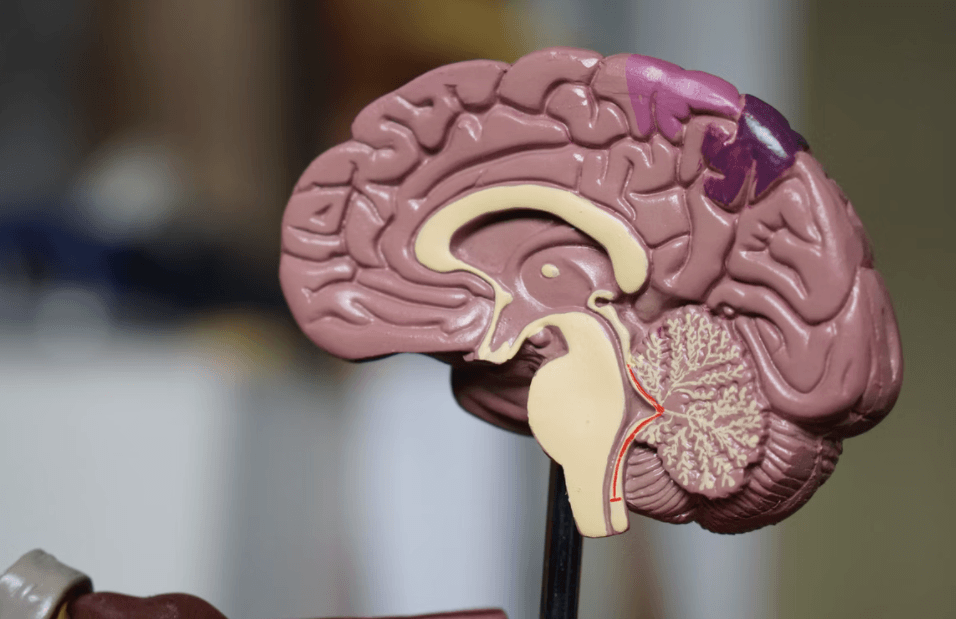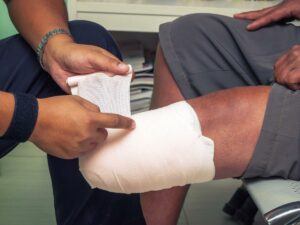The Vital Facts
- Around 10% of the Australian population experience a seizure in their lifetime
- There are at least 60 different types of seizures
- Seizures occur when there is an abrupt and temporary occurrence of abnormal electrical signals within the brain.
Seizures affect one in ten people during their lifetime, but most people are caught helpless when it happens to a family member or friend.
Understanding the proper first aid for seizures can save lives, so here’s what you need to know about seizures and how you can help someone with life-saving first aid.
Here’s a summary of what you’ll find below:
- What Are Seizures?
- Different Types of Seizures
- First Aid For Seizures – Do’s and Don’ts
- When You Should Call An Ambulance For A Seizure
- How To Prevent Seizures
- Learn First Aid For Seizures With Vital First Aid
What Are Seizures?
According to Healthdirect Australia, seizures are defined as abnormal electrical activity in the nerve surrounding the brain. They can be caused by many factors, such as head injuries, brain infections, and adverse effects from drug or alcohol use.
A common sign of seizure is the violent shaking of the body, but there are also many other symptoms of seizures such as:
- Loss of consciousness
- Disorientation or confusion, even hallucinations
- Tingling sensations and numbness around the body
- Being unresponsive and loss of concentrations (i.e. staring into space)
- Stiffening of the body
- Repetitive movements such as smacking the lips
- Jerking of the arms and legs
- Sudden and unexplainable heart rate increase
- Unnatural eye blinking or rolling upwards
Constant seizures, which is defined as more than two seizures in 24 hours, is diagnosed as epilepsy. However, not all people with seizures have epilepsy. Studies show that 142,740 Australians were diagnosed with active epilepsy from 2019 to 2020. Of this number, 52% of them were male, and 48% were female.
Different Types of Seizures
The types of seizures vary depending on which part of the brain it originates from, the movement of the body, and if the person is lucid during the seizure.
There are three main types of seizures: focal onset seizures, generalised onset seizures, and unknown onset.
Focal Onset Seizures
Focal onset seizure, or focal seizure, is the most common type of seizure among people with epilepsy. It originates from one side of the brain and then spreads to other areas of the brain, and an episode of focal onset can last for around two minutes.
People who are fully awake and alert during their seizure are known as focal aware. Meanwhile, those who suffer from loss of awareness or remain frozen during their seizures have focal impaired awareness.
Generalised Onset Seizures
Generalised onset seizures begin from both sides of the brain simultaneously. This type of seizure is slightly more common among children and those with a family history of seizures.
Generalised seizures can be further divided into two types. They are:
- Generalised motor seizures: Otherwise known as ‘grand mal’. These seizures cause stiffening and jerking in the body and loss of consciousness. It also may last from 1 to 3 minutes.
- Generalised non-motor seizures: Also known as ‘petit mal’. These seizures cause a loss of awareness, where the patient may often be seen staring into space.
Unknown Onset Seizures
Unknown onset seizures are diagnosed when it’s unclear where the seizure originated in the brain. However, doctors can identify if the seizure is a motor (involves the muscle) or non-motor (does not involve the muscle) seizure.
So how can we help somebody during an episode? Let’s go through some basic first aid for seizures, along with what NOT to do.
First Aid For Seizures – Do’s and Don’ts

Knowing the right thing to do during a seizure is crucial. So here are some do’s and don’ts when helping someone during an attack.
Do
- Stay calm and keep other people around you calm
- Stay with the person for the duration of the seizure
- If the person is a stranger, check for identification, emergency contact information, or any other medical information
- If the person is awake and alert, comfort the person and speak calmly
- Keep track of the time and duration of the seizure
- Check the person’s breathing
Do’s For Generalised Motor Seizures (grand mal)
- Gently lie the person onto the floor in a comfortable position
- Turn the person onto one side to help maintain their airway
- If possible, lie the person’s head onto something soft or flat, like a jacket
- Remove anything hard or sharp around the person that may cause injuries. This includes any wearables on the person’s body
- Loosen any items around the person’s neck, such as ties
- Do not restrain the patient
After The Seizure
- Help the person to sit up or lie on their side in a recovery position
- If there’s vomit or fluid in the mouth, help them to sit or lie on their side immediately
- If the person has regained consciousness, calmly explain in simple terms what has happened
- Provide lots of reassurance
- If the person is asleep, monitor their breathing and do not disturb them
- Ensure that the person gets home safely
Do Not!
- Do not restrain or hold down the person during the seizure
- Do not move the person unless necessary
- Do not offer the person water or food
- Do not put anything into their mouth.
- Do not give CPR or any mouth-to-mouth first aid unless they become unconscious AND are not breathing normally
When You Should Call An Ambulance For A Seizure
You should call an ambulance in all situations unless directed otherwise by the patient’s medical practitioner.
How To Prevent Seizures
If your loved one suffers from seizures, here are some suggestions that may help minimise its occurrence:
- Take prescription medications as advised by the GP
- Get enough exercise and maintain a healthy diet
- Avoid alcohol and any misuse of substances
- Get at least 7-9 hours sleep a day
- Practice good stress management techniques
- Keep a diary of the seizures and their triggers to avoid them
- Enrol on a first aid training program to learn how to manage seizures the right way
Learn First Aid For Seizures With Vital First Aid
Vital First Aid’s training programs ensure that you’re always ready to provide the proper support when needed. Visit our courses page to see what courses we offer and what you can expect to learn.






